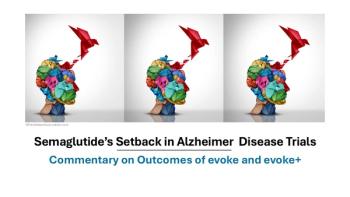
“Complementary” Therapies in Multiple Sclerosis
What happens when complementary and alternative therapies are combined with traditional treatments in patients with multiple sclerosis? A new study suggests some positive benefits. Details here.
Many patients with MS use complementary and alternative medicine (CAM) on their own behalf along with traditional treatments-with or without their physician’s knowledge and cooperation.
What happens when CAM and traditional treatments are combined systematically? A 6-year project sponsored by the Danish MS Society tested the feasibility of an organized collaboration between traditional doctors and CAM practitioners to investigate various outcomes (eg, symptoms and quality of life) for patients with MS.1
The project revealed some interesting predictors of positive response to CAM that had as much to do with the patients’ characteristics as with the success of the collaboration between various practitioners. Here, Lasse Skovgaard describes the study and its implications for care of patients with this disease.
Please describe the project?
Our 6-year research project-The MS Treatment Team Project-started in 2004. At that time, interest in CAM had been increasing among the members of the Danish MS Society. A survey showed that half of our members used CAM regularly-often in combination with conventional treatments. At that time, little was known about possible benefits and challenges of combining conventional and CAM treatments for people with MS. Therefore we initiated the MS Treatment Team Project with the aim of gaining more knowledge within this field. We established an integrative team of practitioners that included 5 conventional practitioners and 5 CAM practitioners; these 10 worked together to offer integrated courses of treatment to 200 people with MS.
The project took place mainly at one of the Danish MS hospitals. It ended in 2010, but it continues to inspire the ongoing development of the rehabilitation program. The goals of the project were to investigate the collaboration process and to assess overall outcomes over 18 months. Results regarding the latter have been published in European Integrative Medicine.1
What alternatives therapies were used?
We included the 5 CAM modalities most commonly used by people with MS in Denmark. They were acupuncture, homeopathy, reflexology, craniosacral therapy, and nutritional therapy. The practitioners who administered these therapies were appointed by their professional organizations and all had experience treating people with MS.
What were the key findings?
We found no significant differences in the development of symptom burden between the 2 groups. However, there was a statistically significant improvement in quality of life among those individuals who participated in the dual approach to therapy. The difference in quality of life lay in the areas of emotional well-being and thinking and fatigue. Some participants had long-term positive outcomes with physical symptoms and also with mental and emotional aspects.2
Were there any predictors of positive response?
Participants who experienced long-term positive outcomes had a process-oriented perception of treatment mechanisms. They seemed more likely to take the next step, and to participate actively in assessing whether the interventions used were successful. They engaged in a mental and physical learning process, accumulating their experiences and using them in an ongoing manner. Among those who experienced long-term positive outcomes, we saw that a neutral or negative outcome could also be a part of their learning process and could thereby indirectly lead them to self-initiate new interventions.
Would you comment about the challenges care providers faced in trying to collaborate?
Collaboration was a challenge for 10 practitioners with very different backgrounds. A neurologist and a homeopathic physician have very different perceptions of such basic concepts as disease, symptoms, health, and science. It took a long time to achieve a mutual understanding. Some practical challenges, logistical and economical, also complicated the collaboration.
The team did not succeed in creating quite the interdisciplinary effort we had hoped for. However, it did achieve many interdisciplinary goals and common understandings about the treatment of people with MS.2
Does this study offer any general insights into CAM?
In Denmark-as in many Western countries-CAM has become increasingly popular over the past 20 years. The conventional health care system has generally met this development with unconcern. I believe that there is a lack of critical awareness about possible inconveniences and risks connected with use of CAM treatments-and a lack of awareness about their possible benefits. These benefits often need to be perceived-and researched-in different ways than conventional medical treatments, not least because the goals of CAM treatments and conventional medical treatments often differ. The former seeks to strengthen the whole organism and support the healing process; the latter is used to alleviate a specific symptom.
What lessons does your study offer physicians who treat patients with MS?
We found that there are many possible benefits of interdisciplinary collaboration. We showed that by collaborating, conventional health care providers and CAM practitioners achieved a very broad frame of understanding.3 Patients appeared to benefit from the interdisciplinary perspective.
This project shed some light on the potential of a holistic approach to MS therapy. New research projects have been initiated as a result.
References
1. Bjerre L, Henningsen L, Skovgaard L, et al.
2. Skovgaard L, Launsø L, Pedersen IK, et al.
3. Skovgaard L, Bjerre L, Haahr N, et al.
Newsletter
Enhance your clinical practice with the Patient Care newsletter, offering the latest evidence-based guidelines, diagnostic insights, and treatment strategies for primary care physicians.















































































































































































































































































